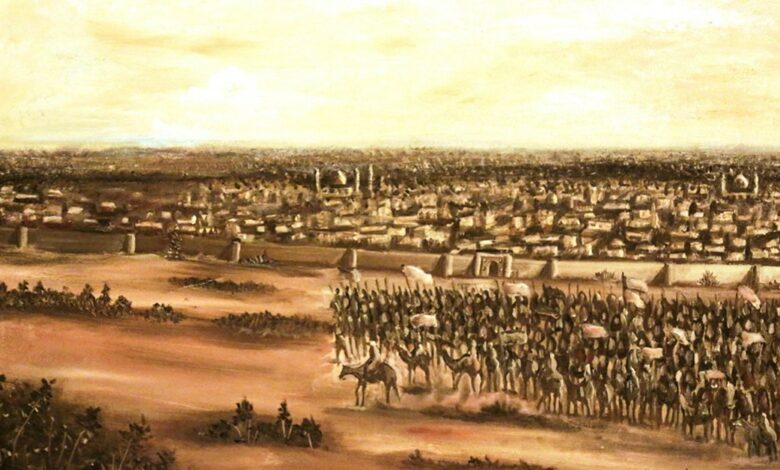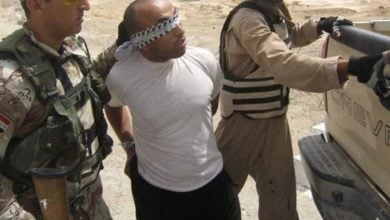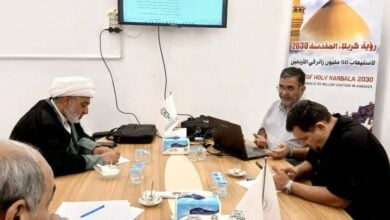19th of Dhul-Hajjah marks “Mazlumiyyah of Karbala World Day”

For several years, the 19th of Dhul Hajjah has been commemorated as a historical event related to the land of Karbala in the Shiite calendar. Mazlumiyyah refers to the injustice and oppression inflicted upon Karbala and the Master of the piece of Paradise on Earth.
The disaster perpetrated by the Wahhabis on this day in Karbala was so extensive that hardly any historical source can be found that does not mention it, marking the biggest of such kind after Ashura; Hence, designated as “Mazlumiyyah of Karbala World Day” by Grand Ayatollah Seyyed Sadegh al-Hosseini al-Shirazi.
More details in the following report:
“Mazlumiyyah” (suffering injustice and oppression) has always been tied to the name of Karbala and has been an ingrained part of this land for more than a thousand years.
From the martyrdom of Imam al-Hussain and his companions in 61 AH to the imposition of restrictions on the pilgrimage of his lovers during the Umayyad rule, to the relentless attacks of al-Mutawakkil al-Abbasi on his shrine and the atrocities that many other rulers perpetrated; those who would tremble in fear at the remembrance of the name and memory of Imam al-Hussain and the impact of his Ashura.
But it seems that what happened in 1216 AH by the Wahhabis was so grave that earned the title “The Second Ashura”.
On the 19th day of Dhul-Hajjah, 1216 AH, a group of Wahhabis under the command of Abdul Aziz bin Saud entered Iraq from Hijaz and attacked the holy city of Karbala.
This group of Wahhabis entered the holy city of Karbala from the direction of Khaima Gah neighbourhood and mercilessly killed men, women and children, and then looted the property of the people of this city as well as the valuable objects of the Shrine of Sayyed al-Shuhada (peace be upon him).
On this day, a large number of residents of the city of Karbala, according to their long-standing custom, went to visit the Shrine of Amir al-Mu’minin, peace be upon him, in Najaf al-Ashraf, on the day of Ghadir, and were thus not present in Karbala, leaving a void of resistance in Karbala to the armed offenders who violated the sanctity of the city.
According to some historical sources, during this attack, 7,000 scholars, nobles of the city, Sadat (descendants of Fatima al-Zahra) and the people of the streets and markets were martyred.
In addition, significant damages were also caused to the Shrine of Imam al-Hussain (peace be upon him) as a result of this brutal, barbaric offensive.
The gravity of this event is so profound that almost all historical sources have written a detailed description of the atrocities that the city witnessed.
Allamah Seyyed Mohsen Amin writes in his book “A’ayaan al-Shia” as follows: “The Wahhabis entered Karbala by force, the people there were killed and injured, except for a few who fled or hid. They destroyed the holy grave of Imam al-Hussain (peace be upon him), tore down the metal-mesh Zarih of the holy tomb and stole all the property in it. By doing so, they revived the actions of al-Mutawakkil al-Abbasi towards the holy grave of Imam al-Hussain (peace be upon him).
Uthman bin Bishr, one of the Wahhabi historians, wrote the following in the description of this attack:
“… they destroyed the dome over the grave (i.e. the grave of Husayn bin Ali) and took away the chest over the grave in which they had placed emeralds, rubies and other jewels, as well as what was in the city in terms of property, weapons, clothes, carpets, and looted all the gold and silver and exquisite Qurans they found. They left the city around midday while they had killed nearly 2,000 people of Karbala.”
To honour this occasion, the Supreme Marja Grand Ayatollah Seyyed Sadegh al-Hosseini al-Shirazi has designated this day as the “Mazlumiyyah of Karbala World Day”, and it has been such recorded in history and commemorated every year.





